

|
Mesh generation capabilities in ADINA (for FEA / CFD / Thermal) include: · meshing for 1D elements such as truss, beam, and pipe elements, · 2D surface meshing for shells, plates, and 2D planar elements, and · general 3D meshing for solids and fluids
This section on mesh generation mostly describe our 3D meshing capabilities which include: · mapped meshing that generates brick, wedge, or tetrahedral elements, and · free-form meshing that generates tetrahedral elements. · mixed free-form meshing that generates hexahedra along with pyramids (if desired) and tetrahedral
|
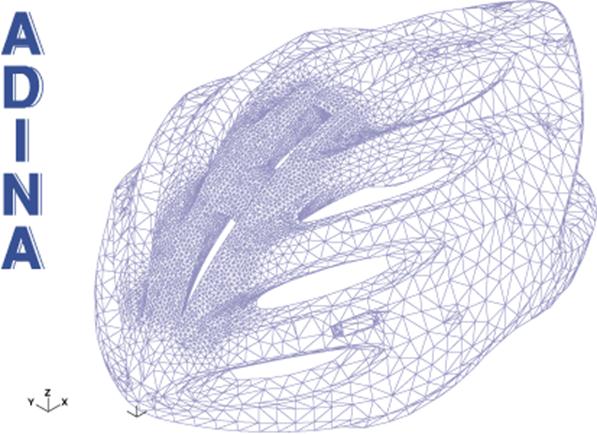
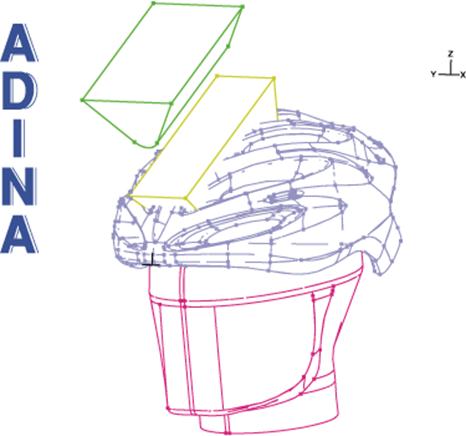
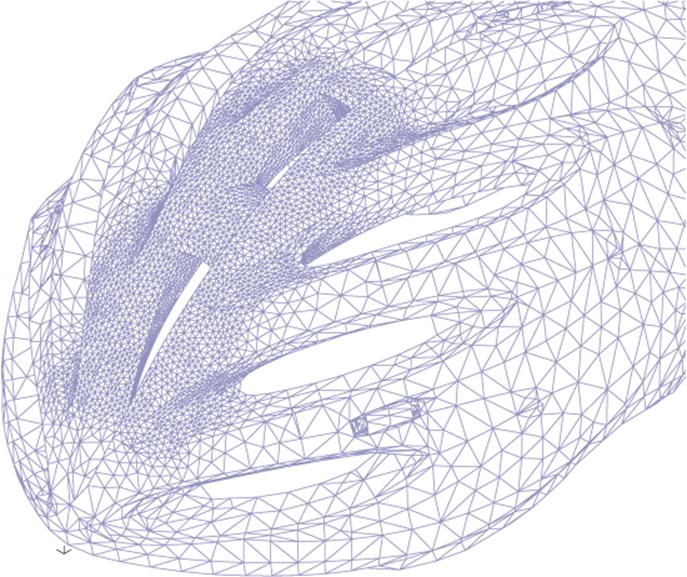
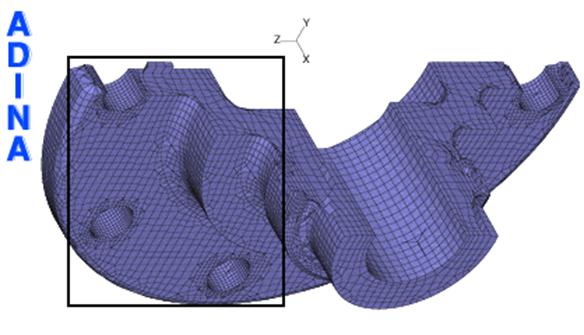
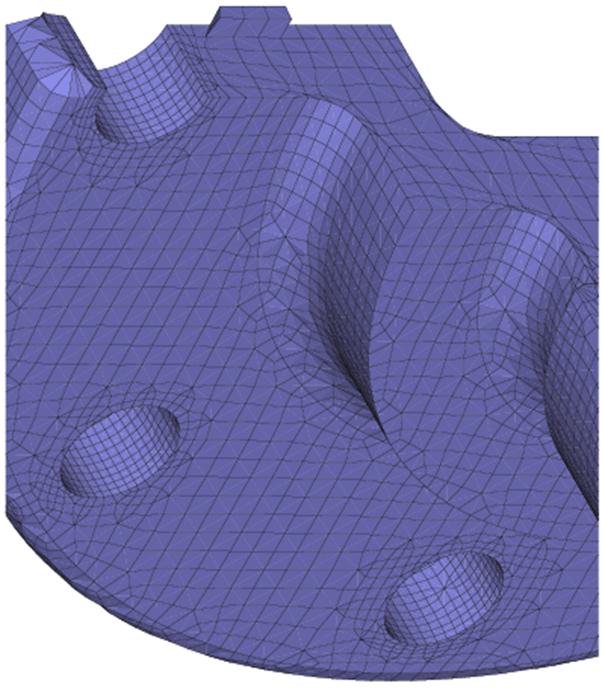
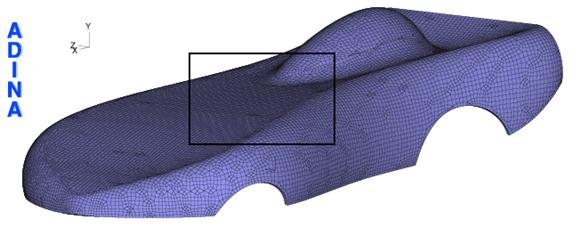
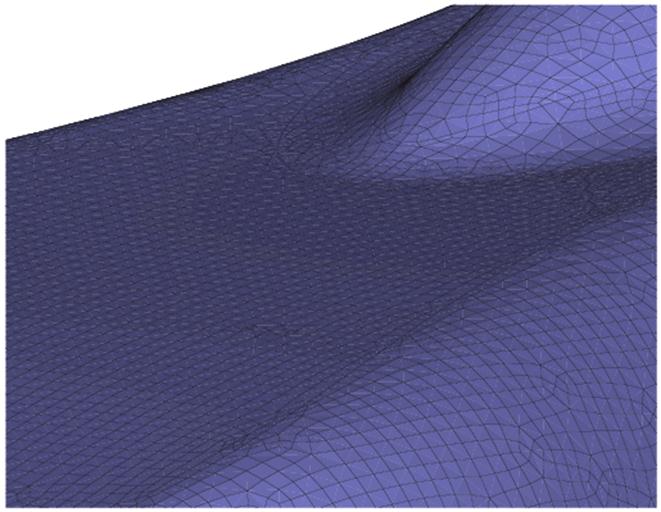
|
Automatic Hex Dominant Meshing
The ADINA the free-form hex dominant mesher can handle complex parts and allow non-uniform mesh subdivision.
In addition, various features that are available in the free-form tetrahedral mesher can also be used for the ‘hex dominant’ mesher, e.g., curvature-based refinement, automatic grading. The mesher will also automatically refine areas where it has difficulty meshing.
Figures 1 to 4 show examples using ADINA’s the free-form hex dominant mesher. |
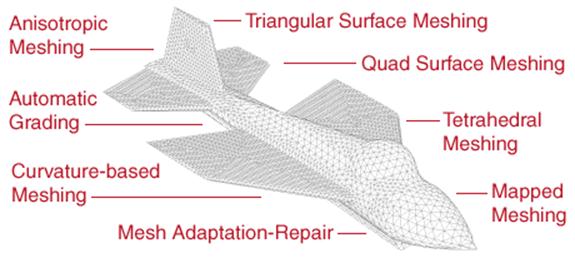
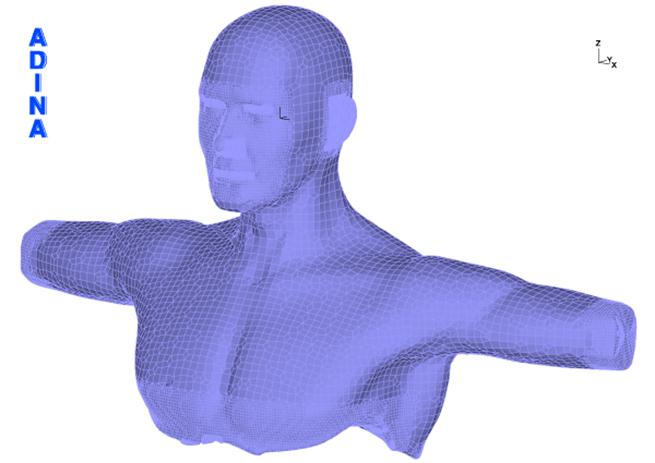
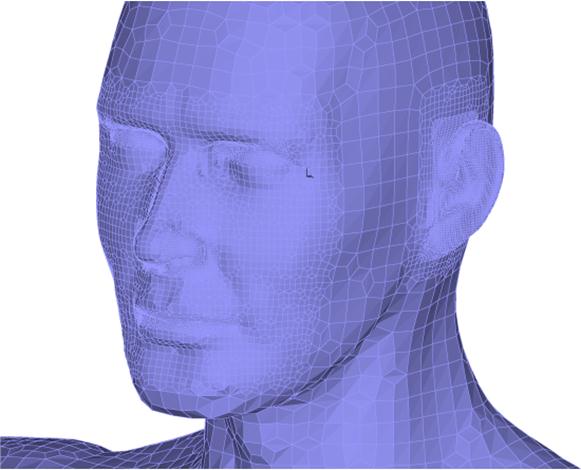
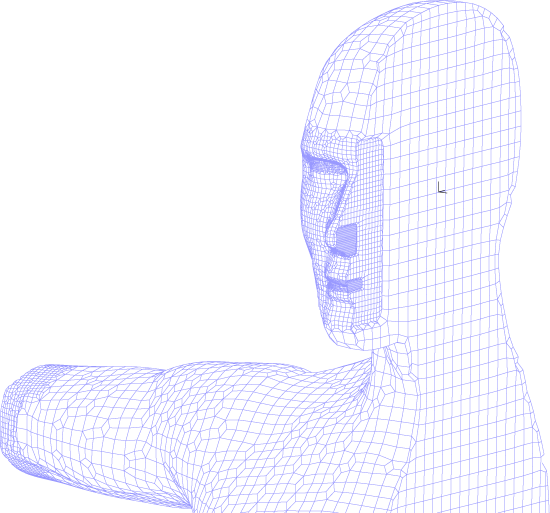

|
Figure 2 |
|
Figure 3 |
|
Effective Meshes using the Size Function Option In many FEA / CFD / Thermal problems, it is very important to be able to mesh densely in certain areas and more coarsely in other areas — like in the analysis of the helmet below, where the contact area requires a fine mesh.
The ADINA System has powerful capabilities to achieve mesh gradation, in particular when ADINA-M is used. Here we feature the new Size Function option that gives great flexibility in defining mesh densities. The option is particularly useful when the densities have to be applied in specific areas of the model.
There are a number of size function types available: · near a point in space, · near an axis (straight line), · near a plane, · in and near a hexahedron of any shape, · in and near a bounding box, and · any combination of the above. |
|
The hexahedron size function type is particularly effective for three-dimensional contact problems where the contact area is expected to be inside a hexahedron.
The analysis of the helmet involves contact modelling and makes use of the hexahedron size function.
The setup of the model is shown in the figure above right. The anvil (green) is assumed to hit the helmet within the volume defined by the yellow hexahedron (size function), and this is where a finer mesh is desired. The tetrahedral mesh obtained is the mesh shown above left.
A close-up is shown in figure on the left. |
|
Automatic Free-Form All-Brick Elements in Meshes In this example, we see describe an interesting case of an important class of problems where the ADINA mesher can generate an all-brick mesh. When a geometric model does not have edges, it is possible to create a 100% hex mesh. Often, in biomedical engineering, models coming from Computer Tomography (CT) or Magnetic Resonance Imaging (MRI) are stored in STL format. STL models typically do not have "hard" edges due to the way they are generated. When a model has no edges (typically, a body with a single face), there are no topological constraints on the hex mesher that prevent the generation of a mesh consisting of only brick elements. Of course, an automatically generated free-form hex mesh is very desirable because for a given required accuracy in results, the number of elements required (and hence nodes used) is much less than when using a tetrahedral mesh. The mesh shown here was created from an STL file describing a human torso (courtesy of AIM@SHAPE Shape Repository). The topology of the model is one body made up of a single body face. The mesh density follows the curvature of the model. The ADINA mesher allows a boundary layer to be created all around the model in order to maximize the quality of the elements on the boundary. This mesh has about 177,000 elements and they are all bricks. |
|
Automatic Free-Form All-Brick Elements in Meshes |
|
Automatic Hex Dominant Meshing |

|
Figure 1 |
|
Figure 4 |
|
Tel: +44 (0)121 703 9236 or e-mail: info@pdslimited.com © Copyright Product Development Services Ltd. All rights reserved 2012 |